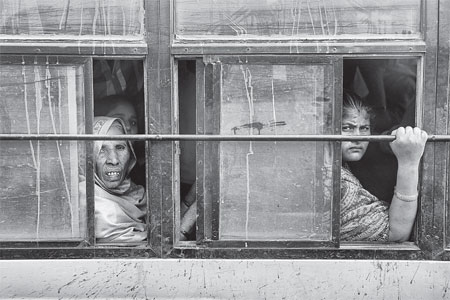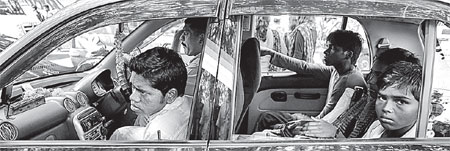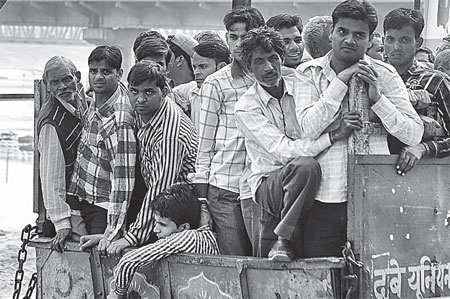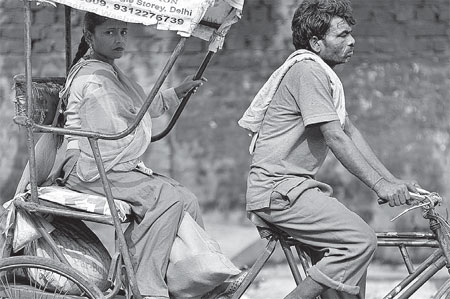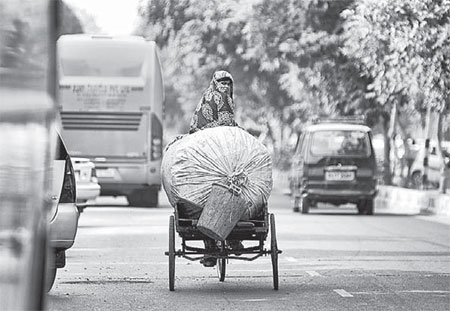Getting a move on
Updated: 2014-02-23 07:48
By Ravi Shankar Narasimhan(China Daily)
|
|||||||
Beijing-born China Daily photographer Du Lianyi thinks that cars stuck in traffic in China's capital are a nightmare but woke up to the harsh reality of Indian conditions on a recent trip. Ravi Shankar Narasimhan reports.
From New Delhi to Mumbai, cars and pedestrians jostle for whatever space there is - and are joined in this melee by bicycles, tricycles, auto rickshaws, pedal rickshaws, trucks and vans of various sizes, buses and, not to forget, animals. Cows are sacred to Hindus, who form the majority of the population, but the traffic free-for-all includes horses, camels and elephants. And then there is the crowd crush in the vehicles. A motorcycle easily carries a couple, a couple of kids and a maid. In cars, the back and even the roof are for seating. In buses, passengers hang on to window grills, the exits and the ladder at the rear. To add to these incredible sights is the sound: the cacophony of nonstop honking. Yet, traffic moves on, albeit very, very slowly; the traffic police seem indulgent; and the travelers appear happy. This is no country for road rage.
|
Buses in India are often jammed with passengers, who have to be very careful when getting off and on as buses never wait for them. |
|
Taxis are only available in big cities, such as Mumbai. They are more comfortable, but only the upper class can afford them. |
|
In India, trucks are not only for cargo but are also used to transport people. |
|
Tricycles, whether motor-or human-powered, are the primary means of public transportation. |
|
Traffic jams are common in India's capital city of New Delhi and locals remain indifferent. |
(China Daily 02/23/2014 page6)
